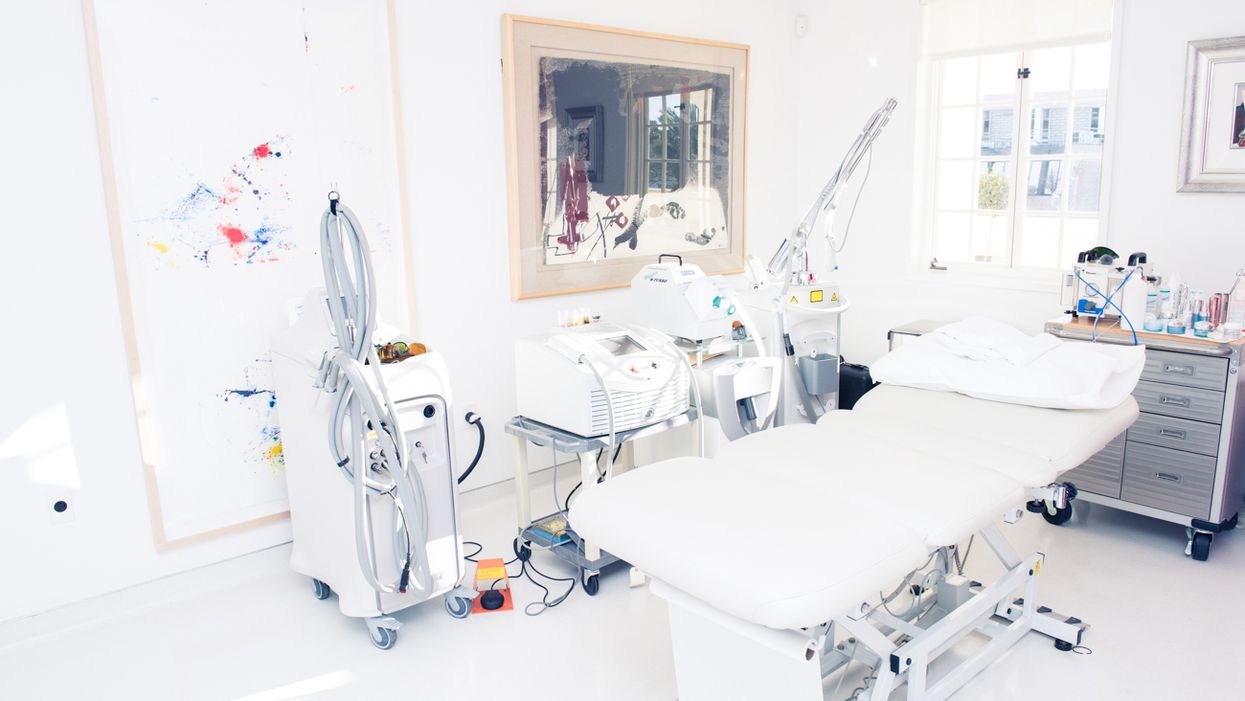What Doctors Don’t Tell You about Your Vagina Post-Breast Cancer
And how to get your girl back in shape.

When I was diagnosed with breast cancer, I knew my body—and my life—were never going to be the same. Things happen between surgery and treatment that alters a woman forever. That’s just the sad fact. The thing is, most of what happened to me, my medical team had told me to anticipate. Most being the operative word. I knew that my hair would fall out, that my breast would be removed, and that my skin would be wrecked. But it’s the things that I didn’t know to expect—like dry vagina and difficulty achieving orgasms—that knocked me for a loop.
Chemotherapy and some anti-cancer drugs like Tamoxifen—which I was put on to prevent a recurrence—can trigger what they call Chemopause, or medically induced menopause. One of the side effects of this, besides never having another period again, is that the body stops producing estrogen. And that, my friends, causes many changes to one’s vagina—Sahara Syndrome (dryness) and difficulty achieving orgasms being two of the biggies. While I was sick, I wasn’t having sex. Turns out, cancer is not a turn-on (for the patient or her partner). So it wasn’t until long after treatment, when I started dating again, that I discovered what was happening with my vajajay. It was only then that I felt robbed by my disease.
When interviewing experts for my book, Pretty Sick: The Beauty Guide for Women with Cancer, I learned that 90 percent of all female cancer survivors will experience some sort of vaginal atrophy and/or sexual dysfunction. Ninety percent!!!! That’s almost all of us! But sadly, most patients that I have talked to and interviewed were not made aware or prepared to handle this major quality-of-life issue.
I wasn’t about to take this old-lady vagina sitch lying down. I mean, we live in a time when sex change operations, face transplants, and liquid nose jobs are routine. So there had to be some simple fixes for a dry and reluctant vagina, right? I put my reporter skills to work and found several things that Benjamin Button-ed my kitty.
Use a Hoohah Hydrator!
Most women in menopause are prescribed estrogen shots, rings, or treatments to ease vaginal discomfort and dryness. But for those of use who have had estrogen-positive cancers, that card is off the table. Our only option is a vaginal moisturizer. In the same way that we apply face cream to keep our skin looking and feeling youthful, vaginal moisturizers do the exact same thing for your girly bits. I use Replens Long Acting Moisturizer, a gel-based lotion-like lubricator that helps increase water absorption in the vaginal tissue. It is so effective that in clinical trials it yielded similar results to vaginal estrogen. Hellooooo 20-year-old pussy!!!
Give Your Girl Some Exercise!
I’m always shocked by how vital a role physical activity plays—not just in strengthening of the body, but also in the healing of it. Pelvic floor exercises are a form of physical therapy that targets the muscles, ligaments, connective tissue, and the nerves that support the bladder, uterus, vagina, and rectum so they remain flexible and responsive (and so you don’t pee in your pants every time you laugh, sneeze, or jump!). PFE isn’t the only activity that benefits the vajayjay. Having sex (and/or masturbating) regularly is another way to keep the vagina happy and healthy. Bottom line: If you don’t use it, you lose it!
Stay Laser-Focused
Everyone knows that there are lasers for your face, but did you know that there are also lasers for the vagina?! These lasers help tighten the vaginal tissue, minimize incontinence, restore moisture, and heighten sensitivity. After I started experiencing Sahara Syndrome, I had Femilift laser (a fractional CO2, much like Fraxel) to help fix it. This laser, and the similar Mona Lisa Touch, use a beam to create microscopic cuts in the vaginal lining. As those cuts heal, it increases blood vessel growth and collagen production in the tissue. The result is a younger-acting and -feeling pussy. And to answer the obvious question—no, it doesn’t hurt. The inside of the vagina does not have the same pain receptors or nerves as elsewhere in the body. I felt absolutely no pain when having the treatment. The only downside is the cost, which ranges from $600-$1,500. But in my opinion, it’s worth the splurge.
The silver lining to all this is that there are more “fixes” than ever before. And now that I understand the value of what I am sitting on, I appreciate (and enjoy) her every day (wink, wink)! I encourage all my female friends—young and old—to do the same.
Want more stories like this?
A Breast Cancer Survivor’s Incredible How-To Beauty Guide
You Can Feng Shui Your Bedroom for Better Sex
How Switching to Baby Products Changed My Hair and Skin




